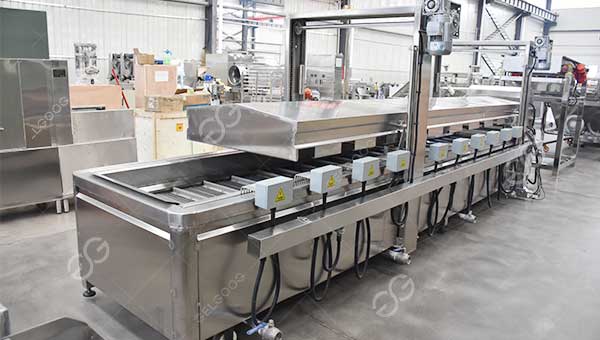In the realm of culinary arts, the intricate dance of flavors and textures often requires a series of carefully orchestrated steps. Among these steps, blanching stands as a crucial technique that lays the foundation for countless delectable dishes. However, as technology continues to evolve, traditional cooking methods have embraced innovation, giving rise to blanching machines. But what does a blanching machine do?

The Art of Blanching: A Culinary Prelude
Blanching, a culinary technique dating back centuries, is the process of quickly immersing food items, often vegetables or fruits, in boiling water or steam for a short period and then rapidly cooling them in an ice bath. This method serves various purposes, from enhancing the vibrancy of colors and setting the stage for preservation to facilitating the removal of skins and neutralizing enzymes that could lead to undesirable changes in taste, color, and texture.
By blanching, the delicate balance between softening the item and retaining its natural crunch is achieved, resulting in a versatile ingredient that can be used in salads, stir-fries, canning, and freezing, to name a few. Traditionally, this process has required constant vigilance, precise timing, and rapid cooling, ensures the preservation of the item’s essence.
Enter the Blanching Machine: Revolutionizing Precision and Efficiency
In the modern culinary landscape, where time is a precious commodity and consistency is paramount. These automated wonders encapsulate the traditional blanching process within a sophisticated apparatus, streamlining and perfecting the technique with a touch of innovation.
A blanching machine typically consists of several key components:
Water Heating System: This element ensures the water or steam reaches the desired temperature swiftly and consistently, eliminating the need for manual monitoring and adjustments.
Conveyor System: A conveyor belt carries the food items through the blanching process, ensuring uniform exposure to heat and subsequent cooling.
Blanching Chamber: This is where the magic happens. The food items are immersed in the boiling water or steam for the precise amount of time required for blanching.
Cooling System: Following the blanching step, the food items are immediately transferred to a cooling bath, often filled with ice water, to halt the cooking process and retain their vibrant colors and firm textures.
Control Panels: The heart of the machine, these panels allow chefs and cooks to input specific parameters, such as blanching time and cooling duration, ensuring a tailored approach to each item.
The Advantages of Blanching Machines
Consistency: Blanching machines remove the human element of timing and guesswork, guaranteeing uniform results across batches.
Quality Preservation: The precision of blanching machines minimizes the risk of overcooking or undercooking, thus preserving the natural flavors, textures, and colors of the food.
Labor Savings: With blanching machines handling the repetitive blanching and cooling cycle, kitchen staff can focus on more intricate tasks.
Versatility: These machines can be adjusted to accommodate various food items, making them indispensable in diverse culinary settings.
In conclusion, the blanching machine has proven to be a transformative force in the culinary realm, modernizing an age-old technique while preserving its essence. By infusing precision, efficiency, and consistency into the art of blanching, these machines have liberated culinary professionals to push the boundaries of creativity.